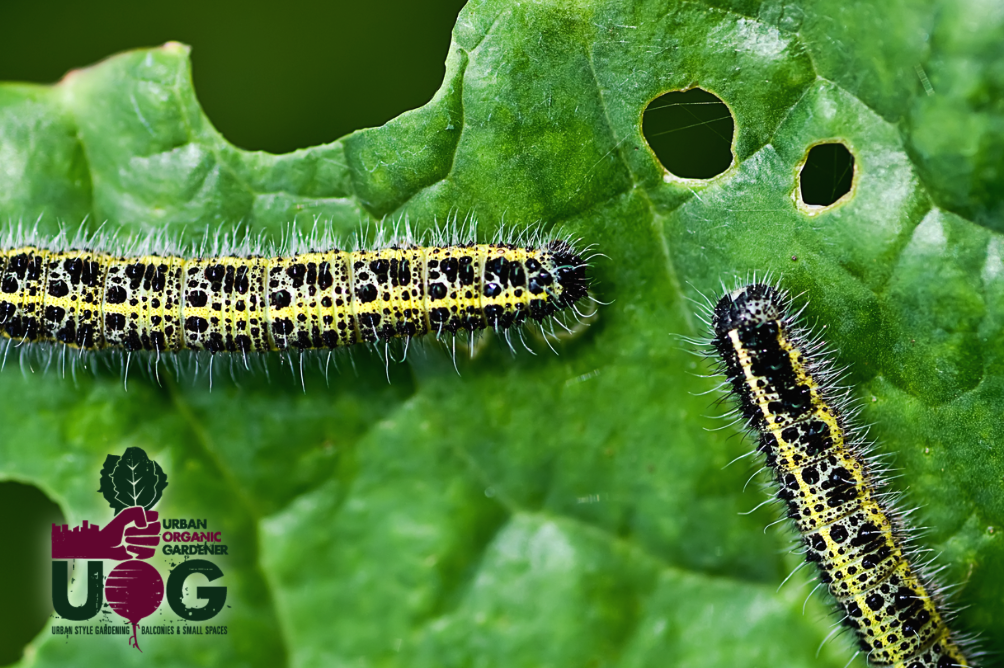How to Identify and Prevent Bugs and Diseases in Your Urban Garden to Keep It Healthy

Something is killing your vegetable garden and you’re not sure what.
There are just holes in the plants or dead ones.
You need help identifying the problem, controlling it and preventing it from happening again without using toxic chemicals.
The articles compiled on this page will help you to do just that with the most common pests and diseases found in urban vegetable gardens.
Why Using Non-Toxic Methods for
Pest and Disease Control is Smart
Here’s the deal:
You have your own vegetable garden and some unfriendly friends have decided to make your garden their lunch…
…Or some disease has struck your garden and starting to wipe out what you are growing.
Your initial reaction might be to do anything you can solve the problem, but that might not be your best option.
Think about it, why would you want to put a potentially toxic substance onto your food to wipe out a pest or cure a disease and then eat that?
Doesn’t make much sense to me.
There are less toxic ways to get rid of the pests and restore your garden back to health.
Identifying Pests
How to Control Pests
And there is plenty more to come…









Hello, i havea greenhouse with 2 layers of boxes made ina squsre foot gardening style. However, fruit flies are everywhere!! 🙁 im all about organic so what do i do? I have many vegetable and basil plants started and have a flying army trying to overthrow me! Thanks and great site!
I have been struggling with the white fungus that attacks tomatoes, leaves and stems.
Wet conditions cause this fungus. It will usually clear up when the plants and areas around your plants dry up and receive a fair amount of sun. There are a few things you can do to help all your plants with better air circulation, which in turn will both ‘cure’ and prevent this condition. Be sure to thin out any overcrowded plants, check the proper plant spacing recommended for your variety. Provide supports/ trellis’s to get foliage and fruit off the soil. Clear any debris from around your plants i.e. rotting leaves, tomatoes that fell off and are no good, prune any leaves that touch or are close to the soil, make sure to weed around your plants because this will help the stems of the plants receive more sun and allow for more airflow Additionally, you can dissolve baking soda in warm water and apply to the affected areas to kill the fungus, or there are products you can buy labeled as fungicides. Good luck with your tomatoes!
Low toxicity Silica Dust has been great for controlling all types of crawling insects
Increasing the beneficial microbes (good bacteria and good fungi) will help keep the bad fungus away similar to how yogurt and probiotics work. Feed your soil earth worm castings which is rich in humic acid, and the beneficial microbes form a symbiotic relationship. They in turn, keep working and feed the needed nutrients to your plants. I work with Vermisterra and we’ve treated farmer’s sick grapefruit and blueberry trees and saw them recover. Putting too much raw compost or fertilizers can attract bugs too, they come to break down that matter, and eat smaller nematodes. A better solution is to make sure your compost has enough time to break down. That, or get a stable organic fertilizer like Vermisterra. Their Fine castings are formulated for greenhouses and indoor plants. The balanced nutrition, trace elements, growth hormones, from Vermisterra earth worm castings or nutrient solution can boost the immune system of plants. Plants emit different wavelengths when healthy or sick, and pests are attracted to the sick plants. Hope that helps!